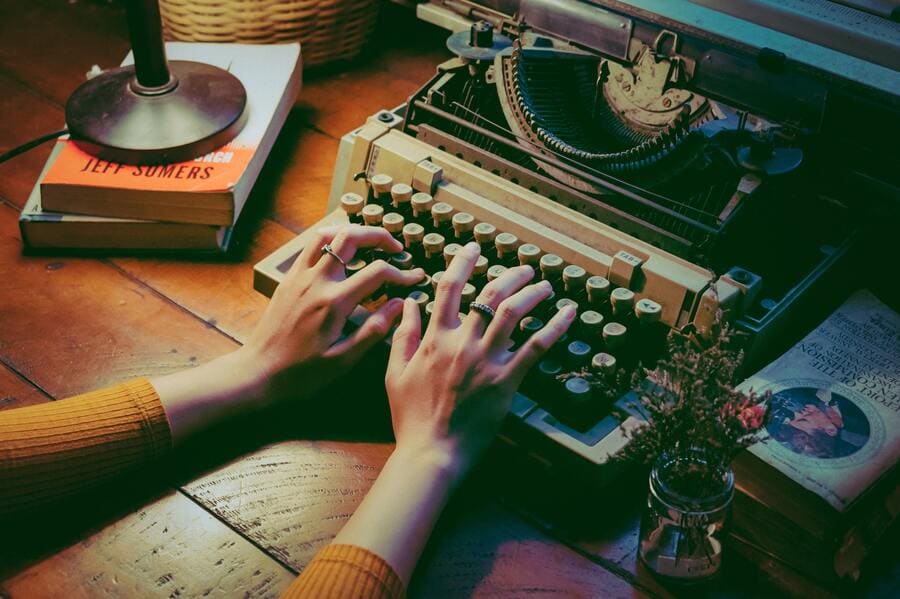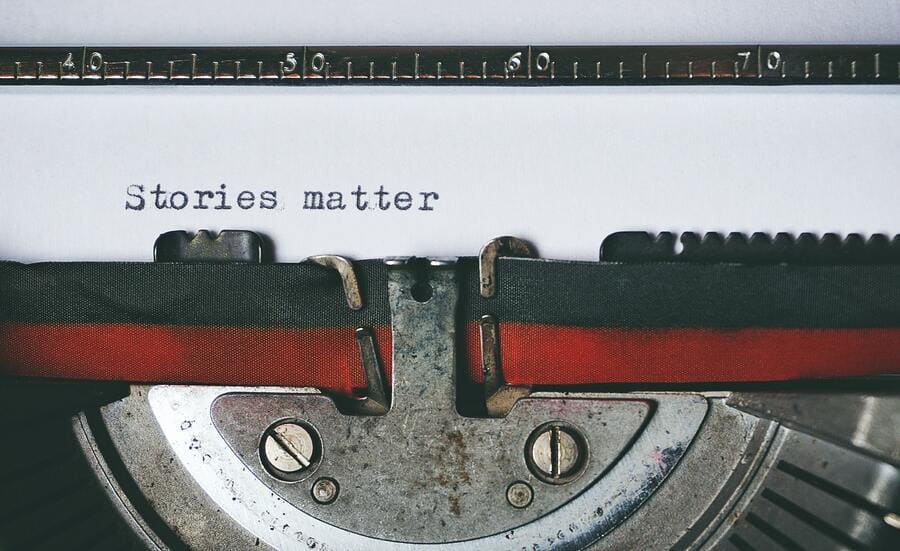So, you want to know what is creative writing, huh?
You’re not alone.
Whether you’re an aspiring novelist, a high school student, or just someone looking to enhance your creative writing skills, this post is your golden ticket.
But what exactly does it entail?
Is it just stringing words together, or is there more to it?
Spoiler alert: It’s a craft that takes time and skill, but don’t worry, we have some tips and actionable strategies to help you get started.
From exploring different genres to mastering narrative art, you’re about to unlock a universe of possibilities.
Ready to become a creative writer?
Let’s begin!

What is Creative Writing? (& What it Isn’t)
At its heart, creative writing is all about storytelling and expression. It’s where imagination meets ink, and the human experience takes center stage.
Through writing fiction, poetry, drama, and even creative non-fiction, writers have the freedom to explore and express thoughts, feelings, and experiences that are uniquely their own.
In creative writing, the sky’s the limit — you could dive into the psyche of a Martian, sketch a dystopian future, or chronicle the life of a pebble.
The main objective?
To engage, to provoke thought, to entertain, and to evoke an emotional response in the reader.
Contrast this with technical writing or academic writing.
These forms of writing have a different purpose and follow a different set of rules.
For example, consider technical writing.
It’s used in fields like engineering or computer science to explain complex systems or processes in clear, straightforward language.
Think user manuals, reports, or scientific articles. They’re about precision, consistency, and clarity rather than evoking emotions or telling stories.
Similarly, academic writing — the kind you’ll find in textbooks or scholarly articles — is typically analytical or persuasive, aiming to build a sound argument based on evidence and reasoning.
Academic writing sticks to strict structures and formats, with the primary goal of informing or persuading rather than entertaining.
If academic and technical writing is about precision, evidence, and clear communication, then creative writing is about exploration, expression, and emotional resonance.
Exploring the Wide World of Creative Writing (Types & Genres)

So what are the different types of creative writing? Well, there are a lot — after all, human creativity is boundless.
But here are the most common genres…
Fiction
Fiction is all about imagining and crafting narratives that aren’t necessarily rooted in reality.
Consider fiction writing in the form of a short story, novella, or novel.
From the fantastical realms in Tolkien’s “The Lord of the Rings” to the dystopian future of Orwell’s “1984”, fiction lets you construct alternate realities or tweak the real one just a bit to explore the ‘what ifs’.
Poetry
Poetry is the art of condensing emotions and ideas into the fewest possible words, while still stirring deep feelings in readers.
Whether it’s a Shakespearean sonnet or a free verse poem like Whitman’s “Leaves of Grass”, poetry uses rhythm, rhyme, and imagery to create a visceral experience.
Poetry can be a wonderful way to explore complex emotions, ideas, or to just play with language.
Non-fiction
Creative non-fiction is about spinning engaging tales from the fabric of real life.
Examples of creative non-fiction are Frank McCourt’s “Angela’s Ashes” or thought-provoking essays like Virginia Woolf’s “A Room of One’s Own”.
Non-fiction allows writers to explore the truth with a creative twist.
It’s all about turning the lens of your unique perspective on the real world and sharing your insights in an engaging, artistic way.
Drama/Playwriting
Ever been moved by a performance on stage?
Playwriting is the craft of creating stories meant to be performed.
From the tragic elegance of Shakespeare’s “Hamlet” to the modern powerhouse of Lin-Manuel Miranda’s “Hamilton”, playwriting combines dialogue, action, and stage direction to bring stories to life in a very physical and immediate way.
Screenwriting
This is the art of writing scripts for film or television.
As a screenwriter, you’re responsible for creating the blueprint for visual storytelling.
Picture the mind-bending twists of “Inception” or the heartwarming tale of “Finding Nemo”.
Screenwriting involves crafting dialogue and visual directions that help bring the director’s vision to life.
Songwriting
From Bob Dylan to Taylor Swift, songwriting is a form of creative writing many of us engage with every day.
Songs can tell stories, express emotions, or capture a moment in time, all set to a melody that often enhances the meaning and impact of the words.
Flash Fiction
This is a writing style of fictional literature characterized by its extremely short length.
Flash fiction stories are usually under 1000 words, and they challenge the writer to tell a compelling story with a clear narrative in a very confined space.
Every genre of creative writing offers its unique challenges and rewards, and each one can help you grow and evolve as a writer.
So go ahead, dip your toes into these different pools and see which one feels right for you.
14 Creative Writing Tips to Unleash Your Inner Writer

Ready to let your creativity off the leash? Here are some tips to get you started on your creative writing journey.
1. Carve Out Dedicated Writing Time
A daily writing habit can help keep your creative writing skill sharp and your creative juices flowing.
Even if it’s just a few minutes each day, consistency is key.
This dedicated time can also act as a mental space where you allow yourself to create and explore ideas without the interruptions of everyday life.
2. Embrace Freewriting
Freewriting is like stretching before a workout — it warms up your creative muscles and helps you limber up.
It’s about letting your thoughts flow freely, without judgement or restraint, and can lead to unexpected insights and story seeds.
You may find that this practice also helps to reduce writing anxiety by shifting focus away from perfection and towards the process of creation.
3. Experiment with Different Genres
Trying out various genres of creative writing not only helps you discover your strengths and preferences, but also enhances your versatility as a writer.
It can also lead to unexpected discoveries.
Maybe you’ve always thought of yourself as a novelist, but find that you have a knack for poetry.
Keeping an open mind and being willing to experiment can lead you to exciting new creative territories.
4. Master the Art of Observation
Great writers are great observers.
Paying close attention to the world around provides a rich source of inspiration for your writing.
Write down interesting conversations, striking scenery, or even unusual smells.
These small details can lend authenticity and vibrancy to your stories.
So, whether you’re on a crowded subway or strolling through a quiet forest, keep your senses alert and your notebook handy!
5. Practice Descriptive Writing
Creative writing is as much about showing as it is about telling.
Practicing descriptive writing brings your characters, settings, and scenes to life.
Try to engage all the reader’s senses — sight, sound, smell, taste, and touch.
This helps to create an immersive experience for your reader and make your writing more memorable.
6. Experiment with Writing Prompts
Writing prompts are a fantastic way to jumpstart your creativity, especially when you’re feeling stuck.
They can take the form of a phrase, an image, or even a situation.
Try writing a short piece based on a prompt and see where it takes you – it could lead you to a story idea you would never have thought of on your own.
7. Study Story Structure

Understanding the structure of a story — setup, confrontation, and resolution — is essential for crafting compelling narratives.
Each part serves a specific function and propels the story forward.
Read up on different narrative structures and consider how they could apply to your own writing.
This foundational knowledge will serve you well no matter what genre you’re working in.
8. Create Complex Characters
Characters are the heart of any story.
To create characters that feel real to your readers, they need to be fully fleshed out with their own desires, flaws, and contradictions.
Invest time in character development, imagining your characters’ backgrounds, motivations, and fears.
Remember, the most engaging characters are often the ones that readers can empathize with, even if they’re flawed.
9. Read Widely
The more you read, the more you’ll understand about different writing styles, narrative structures, and character development strategies.
But don’t just stick to your favorite genres.
Read widely — across different genres, cultures, and time periods. It will help broaden your perspectives, spark fresh ideas, and enrich your own writing.
10. Start a Writing Journal

A writing journal can serve as a treasure chest for ideas, sketches, character descriptions, or just musings about the world.
Over time, these entries can become a gold mine of inspiration for future writing projects.
It’s also a great tool for tracking your writing progress and reflecting on your journey as a writer.
11. Seek Feedback and Support
Writing doesn’t always have to be a solitary pursuit.
By engaging with writing communities, you can benefit from others’ experiences, receive constructive criticism, and also learn by critiquing others’ work.
This shared camaraderie can be a significant source of motivation and growth.
12. Set Achievable Goals
Setting tangible, achievable goals are like stepping stones on your writing journey.
These could range from small, daily targets like writing a certain number of words, to larger aspirations such as completing a manuscript or getting published.
Celebrating these milestones, no matter how small, will boost your confidence and drive to keep going.
13. Edit and Revise
Your first draft is just the beginning.
Revisiting your work, reworking sections, and fine-tuning language are all part of the writing process.
This is your chance to sharpen your narrative, enhance your characters, and ensure that your story is as compelling as possible.
Remember, every great writer is also a great editor.
14. Embrace Failure and Persevere
Every writer, from Stephen King to J.K. Rowling has faced rejection and failure.
Writing can be a journey of highs and lows, but every stumble is an opportunity to learn and grow.
The most successful writers are those who persevere, who pick themselves up after rejections and setbacks, and who stay committed to refining their craft.
Every word, every sentence, and every story you write is a step forward on your creative journey.
Follow the Ultimate Creative Writing Commandment

There’s one tip that is absolutely crucial to your creative writing journey…
The tip: Start writing.
Like, today.
Know that your writing doesn’t have to be perfect — but it does need to exist.
Remember, there’s no right or wrong way to be creative. Your voice is uniquely yours, and the world needs to hear it.
So go ahead, let your imagination run wild, and let your creative work entertain and inspire.
Happy writing!



